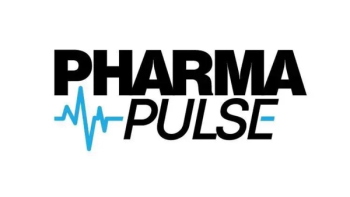
Measuring What Matters
Ways to reimagine pharma’s operating model and KPIs for commercial success in an AI-driven future.
The latest wave of artificial intelligence (AI), digital health, and direct-to-patient (DTP) models have the potential to drive significant innovation, transform patient experiences, and redefine business and operating models across life science companies. Estimates show that AI alone could drive value equivalent to 11% of current revenue for a typical pharma company, while DTP models including digital health could create $100 billion in annual value through improved engagement, prescription fulfillment, adherence, and retention. However, in order to fully unlock these massive opportunities, life science companies must embrace a new way of operating and measuring success.
While major strides have been made in the research & development and clinical decision support functions, AI’s impact on other areas like patient care and drug commercialization has been much slower. This also reflects the broader challenge of AI adoption across industries, where less than 15% of companies are seeing real ROI from AI investments, more than half of AI pilots are not making it to production, and only roughly a third of employees are actively using GenAI. Likewise, outside of the obesity and migraine categories, only a fraction of pharmaceutical companies and brands have adopted DTP models despite the significant upside.
So what’s getting in the way? And what needs to change for pharma companies to transform into patient-centric, AI-driven enterprises?
What’s getting in the way?
Several barriers to change are holding the industry back from the potential of AI and DTP to transform pharma’s business and operating model. Here are five that come to mind:
- Built-in defense mechanisms and risk aversion – While many executives talk a big game on transformation and innovation, entrenched business and operating models get in the way of breakthrough innovations that could drive real value in the future. There tend to be more people in most life science companies that can say “no” versus “yes” to the high-risk/high payoff innovations focused on the commercial model needed to stay ahead of disruption in the future. As a result, more energy is spent using AI and DTP to target efficiencies in the current model versus transforming to a new one.
- Focusing on changing technology vs changing behaviors – Yes, technology is rapidly evolving, but if teams focus solely on technology, they will undershoot the larger transformation opportunity. Only about 30% of AI transformation is related to the technology and algorithms, while 70% is driven by the people and organizational change. This requires leadership teams to focus on changing mindsets and behaviors at the employee and team level through a combination of a clear vision and objectives, policies, and guidelines for responsible innovation, upskilling for AI and new ways of working, rewards and incentives, and empowering employees to continually experiment and learn.
- Organizing around the product versus the patient – The historic commercial model in most pharma companies is still organized in legacy functions to support different activities required to launch and scale a new product, such as market access, marketing, field, medical affairs, patient support, and distribution. Over time, these loosely integrated “silos” drive inefficiencies and disconnects in delivering a great patient and healthcare provider experience while optimizing for the best patient outcomes. DTP models force life science companies to organize capabilities around the patient journey and align all functions around common objectives like speed to therapy, patient acquisition, and patient retention.
- Thinking “today forward” vs “future back” – When new technologies like GenAI come along, it’s easy for executives to get excited by the potential gains when they hear 40% of most working tasks could be addressed by AI. But where organizations get stuck is trying to inject a fundamentally new technology such as AI agents into their existing ways of working, resulting in underwhelming improvements and in some cases, frustration by employees who are accountable for the new AI solutions. Instead, companies need to spend time thinking “future back” to reimagine how different parts of the operations and commercial model could ideally look in an AI-first future and work backwards toward the near-term steps to get there.
- Holding on to historic success measures – Sometimes, companies become blinded by their own success and miss emerging opportunities to innovate and change as a result. Success metrics certainly matter, but are companies too focused on more traditional KPIs to measure success that are less relevant now? Historic metrics such as revenue, profit, market share, prescription fills, and HCP engagement focus more on transactions and volume over experiences and outcomes. If we want to drive real transformation and leverage new innovations like AI and DTP, don’t we need to change the way we measure our success?
Changing how we measure success
Management Guru Peter Drucker was famous for saying “What you measure is what you manage.” As pharma evolves through AI and direct-to-patient innovations, KPIs should shift towards more personalized, patient-centric measures, powered by data-driven insights and digital engagement. In most consumer-facing industries where the best customer experience wins, success measures like acquisition cost, conversion rates, support costs, order fulfillment time, customer lifetime value, and customer satisfaction are the norm.
The table to the right shows how life science companies could transition from legacy KPIs to a new set of metrics to become patient-centric, AI-driven organizations.
Let’s explore these new KPIs in more detail.
- Patient lifetime value – Patient lifetime value or LTV represents the total expected revenue from each patient driven by the expected prescriptions, multiplied by the net price adjusted by the expected non-adherence rate and churn rate for a given patient. DTP models make it easier for pharma companies to track and measure LTV via the on-going connection to the patient.
- Patient satisfaction/NPS – One of the most important measures of brand success or “stickiness” for both B2C and B2B industries is net promoter score (NPS). This reflects the likelihood of your current customers recommending your brand to other prospective customers. DTP solutions coupled with AI personalization allow pharma companies to interact more directly with patients and get feedback on their level of satisfaction and loyalty with the brand and experience. NPS also provides a measure of trust in your brand, which will become even more critical as AI-driven interactions grow.
- Clinician satisfaction/NPS – Just like patient satisfaction, measuring the volume of clinicians prescribing a product is not good enough to get at how engaged and satisfied they are with your product and experience. Using NPS for clinicians can get at how well your company is reducing the friction, making it easier for them to understand and prescribe your product and manage the care of their patients using it.
- Acquisition cost per patient – The pharma industry spends roughly $30 billion on marketing with almost 30% going to traditional ad-media tactics like TV ads. Traditional field sales models continue to consume as much 40% or more of pharma’s commercial spend. As engagement models continue to shift from traditional channels to new modes of interaction like digital self-service, wearables, and conversational AI, companies will need to tailor and optimize their spend to maximize the number of patients in the funnel for their product.
- Time to therapy – Given the time to diagnosis and treatment for many complex disease areas can be years due to factors such as poor access, limited awareness and education, long wait times, and affordability challenges, there is significant benefit to reducing time to therapy for patients, healthcare providers, and pharma companies. But measuring time to therapy requires an end-to-end approach to tracking patient progress across the entire care journey, which can be enabled by direct-to-patient approaches and more AI-driven engagement models.
- Support cost per patient – Today, pharma spends over $5 billion on patient support programs, yet only about 3% of patients take advantage of these services. Given the real challenges around onboarding, affordability, and medication adherence, there is clear benefit to supporting patients in the post prescription journey, but broadening the reach requires leveraging new solutions like companion apps and AI agents to drive more personalized self-service backed by human care navigators to achieve better economics per patient.
- Rx conversion rates – In most businesses outside of pharma, getting a customer to a website or store is only one step in the process. Converting that customer (if appropriate) to buying the product is the most critical step. In healthcare, this conversion happens as the result of an independent clinical decision, so pharma’s role is to educate physicians and patients to build awareness and improve the consideration of their specific therapy, as well as simplify the process for an HCP to prescribe their medication within their normal workflow or systems.
- Patient adherence– Patient non-adherence continues to be a significant challenge for pharma with typical non-adherence rates in chronic disease at 50%, costing the industry around $250B in lost revenue in the US and $600 billion globally. Primitive adherence solutions like education and medication reminders have not really put a dent in the size of the problem, but the new wave of AI-driven personalization—coupled with digital health and direct- to-patient solutions—give pharma a direct pathway to dramatically improving adherence by as much as 30% or more, while measuring this improvement via new digital channels.
- Patient outcomes – Due to the lag in most prescription and health system data that pharma companies have access to, it is difficult to get a clear view of patient outcomes resulting from a specific therapy. But with patient-centric DTP and digital health solutions and digitized patient support, pharma can get a near real-time view into the patient journey, including data and insights around their overall health. This real-world data also becomes important in demonstrating value to HCPs and payers as well as optimizing the overall experience for patients and caregivers.
- Zero party data– As the expectations around personalized experiences and privacy management increase, pharma companies have had to shift from 3rd party to 1st party data to drive their omnichannel engagement solutions. The true measure of effectiveness in these customer engagement solutions is the willingness of customers to offer even more data about themselves, or “zero party data,” to further personalize their unique engagement model. The collection of zero party data also reduces the required spend on external data to fill gaps in existing customer data in the future.
New KPIs as a path to transformation
The future of the pharma industry lies in embracing AI and direct-to-patient models to drive innovation and enhance patient experiences. By shifting towards personalized, patient-centric metrics and leveraging data-driven insights, brands both big and small can unlock significant value and transform their operating models for sustained success. This in turn will transform how they work and, most importantly, how they effectively bring therapies to market to improve the lives of patients.
About the Author
Scott Snyder, PhD, is chief digital officer at EVERSANA and a senior fellow with the Wharton School of Business.
Newsletter
Stay ahead in the life sciences industry with Pharmaceutical Commerce, the latest news, trends, and strategies in drug distribution, commercialization, and market access.





